15 Calcium-Rich Foods For Babies And Toddlers
Calcium is very important for growing babies and toddlers. It helps build strong bones, healthy teeth, and supports overall growth. The good news is, you don’t have to rely on milk alone many other foods are rich in calcium too.
In this article, we’ll share 15 easy and healthy calcium-rich foods for little ones. From dairy options like yogurt and cheese to non-dairy choices like leafy greens, seeds, and beans, these foods are tasty and safe for young children.
Adding these foods to your child’s meals can help them grow strong and stay healthy every day.
Why Calcium Matters
Calcium builds bones and teeth. Babies and toddlers grow fast. Their bodies need steady calcium for healthy growth. Calcium helps muscles and nerves too. Small, regular meals with calcium are better than one big meal.
How much calcium do children need?
Birth to 6 months: about 200 mg per day.
7–12 months: about 260 mg per day.
Children 1–3 years: about 700 mg per day.
This article is divided by age. The first section is for babies between 6 and 12 months, and the second is for toddlers from 1 to 3 years. For every food, you’ll find easy benefits, safe serving tips, portion ideas, and a few quick recipe suggestions. The explanations are kept short and simple, so any parent can follow along. Let’s get started.
Calcium-Rich Foods for Babies (6-12 months)
Note: For babies under 6 months, breast milk or formula is the main food. Start solids around 6 months when your baby shows readiness (sits with support, good head control, interest in food).
1. Breast Milk or Infant Formula
What it is: For babies, breast milk or formula gives many nutrients. Calcium is included in the right amount for newborn growth.
Why it helps: It meets baby’s early calcium needs. It also gives protein and other vitamins. Keep breast milk or formula as the main drink until 12 months.
How to serve: Feed breast milk on demand. For formula, follow package mixing instructions and your pediatrician’s advice.
Portion tips: Babies vary. Feed until your baby seems full. Watch cues like turning head, pushing away, or closing mouth.
Safety notes: Do not give cow’s milk as the main drink before 12 months. It can cause blood loss in the gut and is too heavy for baby kidneys.
Quick idea: When starting solids, mix a little mashed fruit into yogurt or formula-based cereal for taste.
Read More: 200 Botanical Baby Names For Boys And Girls
2. Yogurt (Plain, Unsweetened)
What it is: Soft, thick dairy food. Choose plain and unsweetened whole-milk yogurt for babies.
Why it helps: Yogurt gives calcium, protein, and friendly bacteria (probiotics). It is gentle on baby tummies.
How to serve: Offer a spoonful at first. Mix with mashed banana, cooked apple, or plain purees. You can thin it with a little breast milk or formula if needed.
Portion tips: Start with 1–2 teaspoons. Slowly increase to about 2–4 tablespoons as the baby accepts it.
Safety notes: Watch for signs of dairy allergy: rash, vomiting, or diarrhea soon after eating. If you see symptoms, stop and talk to your pediatrician.
Recipe idea: Mash cooked pear, fold into 2–3 tbsp yogurt. Serve cool.
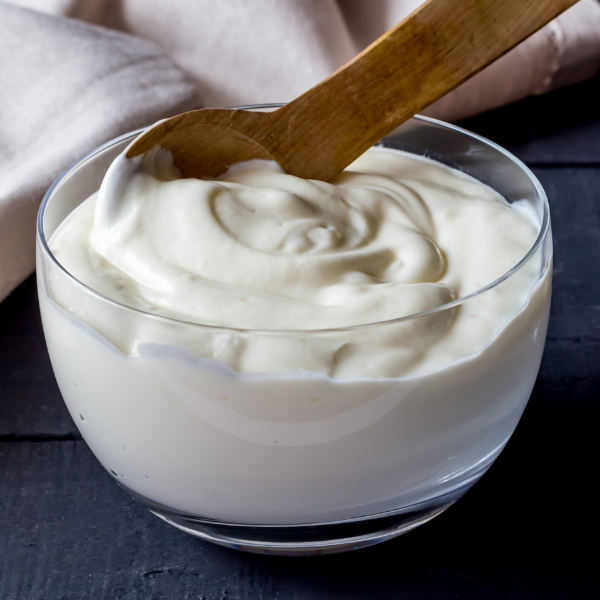
3. Soft Cheese (Mild Varieties)
What it is: Mild cheeses like mozzarella or ricotta. They are soft and easy to mash.
Why it helps: Cheese gives calcium and calories for growth. It has protein and healthy fat.
How to serve: Grate cheese into warm, mashed veg or rice. Mix small bits into cooked egg. Ricotta can be spread thin on soft toast.
Portion tips: Give small amounts at first 1–2 teaspoons. Cheese is concentrated, so little goes far.
Safety notes: Some cheeses can be salty. Pick low-salt or rinse firmer cheese. Avoid hard, large chunks that may choke.
Recipe idea: Mix ricotta with mashed banana for a sweet snack.
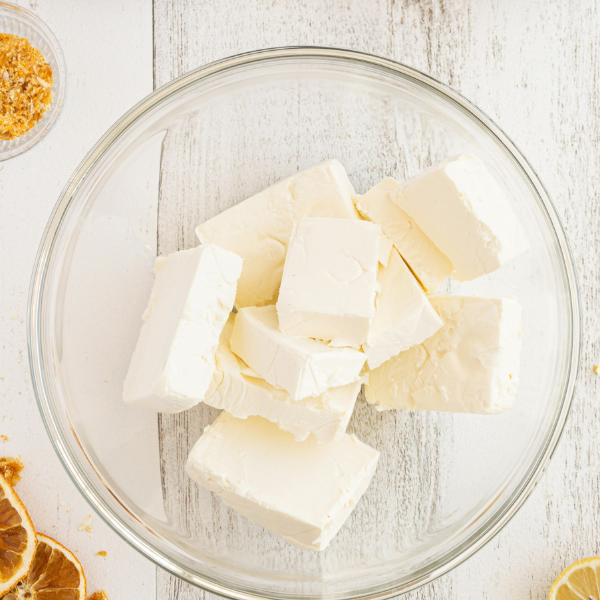
4. Tofu (Soft or Silken)
What it is: Soy curd. Soft (silken) tofu works best for babies. Tofu made with calcium sulfate contains more calcium.
Why it helps: Tofu gives calcium and plant protein. It is mild and easy to blend.
How to serve: Puree silken tofu alone or with fruit. Mash soft tofu with cooked sweet potato. Cut small soft cubes for baby-led weaning.
Portion tips: A few tablespoons at a time. Tofu is filling and nutritious.
Safety notes: Start with small amounts if your family has soy allergy history. Watch for any rash or upset.
Recipe idea: Blend silken tofu with ripe mango for a creamy puree.
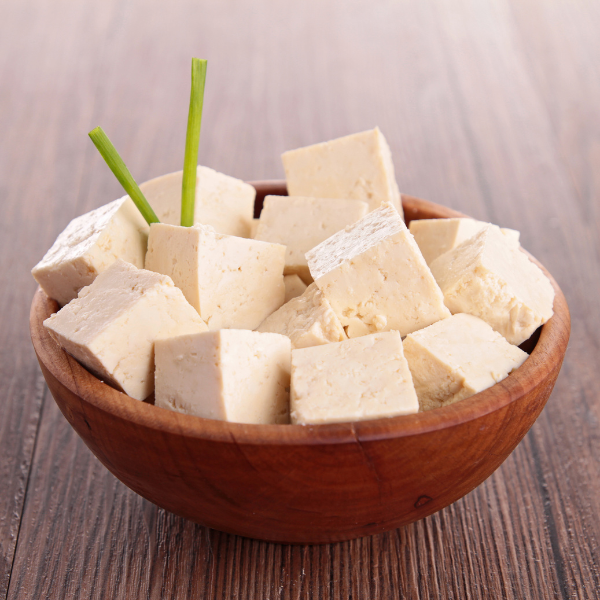
5. Broccoli (Soft Cooked)
What it is: A green vegetable rich in calcium and vitamin C.
Why it helps: Broccoli adds calcium and other vitamins. Vitamin C helps the body use iron and supports immune health.
How to serve: Steam until very soft. Mash or puree for babies. For baby-led weaning, offer soft, small floret pieces that baby can hold.
Portion tips: 1–2 tablespoons mashed to start. Increase by appetite.
Safety notes: Cook well. Soft pieces lower choking risk.
Recipe idea: Steam broccoli and potato together, mash with a little breast milk or yogurt.
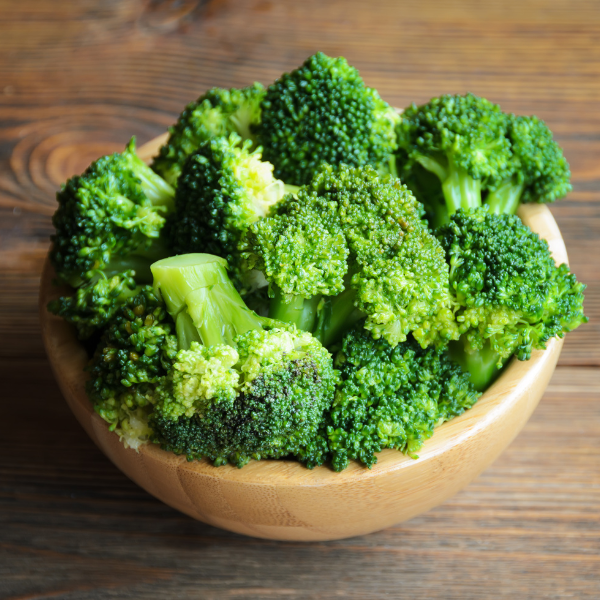
6. Lentils and Soft Beans
What it is: Lentils, chickpeas, and white beans offer calcium and iron.
Why it helps: These legumes give plant-based calcium and good fiber. They are filling and gentle on the stomach when cooked well.
How to serve: Cook until very soft. Mash or puree to a smooth texture. Add mild spices like cumin for flavor (small pinch).
Portion tips: Start with 1–2 tablespoons pureed. For older babies, small soft lumps are fine.
Safety notes: Beans can cause gas. Introduce slowly and in small amounts.
Recipe idea: Make a simple lentil puree with steamed carrots and a little olive oil.
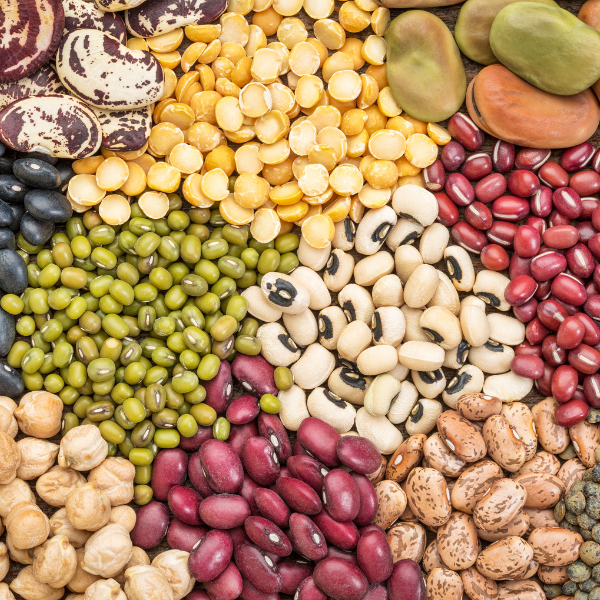
7. Chia Seeds (Soaked Soft Pudding)
What it is: Tiny seeds that absorb liquid and become soft jelly-like.
Why it helps: Chia seeds contain calcium and fiber. When soaked, they are safe for baby eating textures.
How to serve: Soak 1 teaspoon chia in breast milk, formula, or water for a few hours until gel forms. Mix with fruit puree or yogurt.
Portion tips: Start very small about 1 teaspoon of soaked chia. Increase gradually. Chia is dense in nutrients.
Safety notes: Never give dry chia seeds to a baby. Always pre-soak until soft.
Sources: Chia seeds are a notable plant source of calcium.
Recipe idea: Soak 1 tsp chia in 2 tbsp milk. Stir into mashed banana.
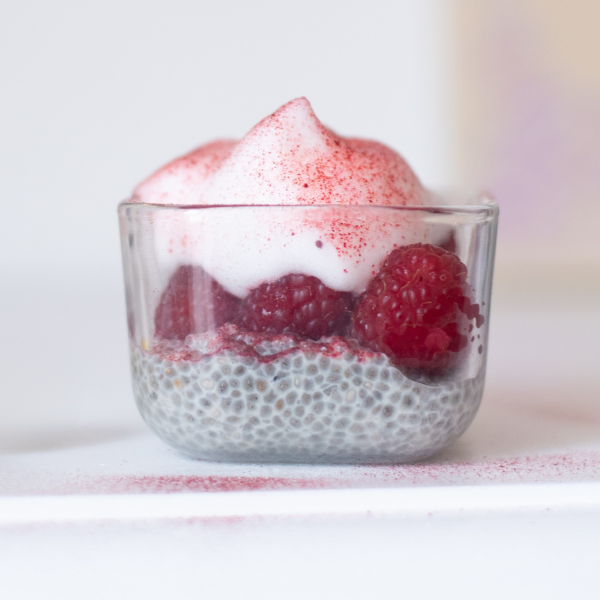
8. Tahini (Sesame Paste) – Small Amounts
What it is: Smooth paste made from ground sesame seeds.
Why it helps: Sesame seeds are rich in calcium. Tahini gives a nutty taste and healthy fats.
How to serve: Thin a small spoonful of tahini with water and mix into mashed chickpeas or yogurt. Use very small amounts at first.
Portion tips: Start with 1/4 to 1/2 teaspoon mixed in another food.
Safety notes: Sesame is a common allergen in some families. Introduce a tiny amount and watch for reaction. Do not give thick spoonfuls, thin before serving to avoid choking.
Recipe idea: Mix 1/2 tsp tahini with mashed avocado and lemon for a smooth dip.
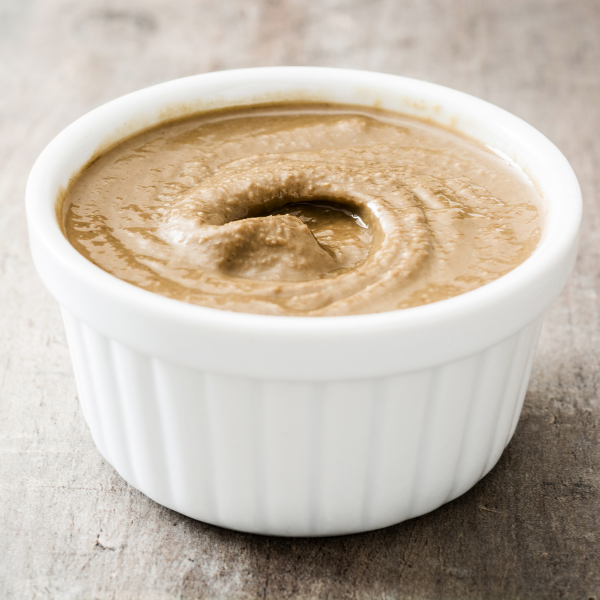
Calcium-Rich Foods for Toddlers (1-3 years)
At 12 months, toddlers can have a wider range of foods. Cow’s milk may be added as a drink. Follow portion limits and keep a mix of foods for balanced nutrition. Cow’s milk and other choices may help meet daily calcium needs.
9. Cow’s Milk (Whole Milk after 12 Months)
What it is: Pasteurized whole milk. Give after 12 months if no allergy.
Why it helps: Milk is a common, easy source of calcium and vitamin D. It helps reach daily calcium targets.
How to serve: Offer milk in a cup. Use milk in porridge or smoothies. Limit milk to about 2 cups (16 ounces) per day. Too much milk can reduce iron intake.
Portion tips: Aim for small, frequent servings across the day.
Safety notes: Do not give cow’s milk as the main drink before 12 months. If your child has milk allergy, use pediatric guidance for alternatives.
Recipe idea: Make warm oatmeal with milk and mashed fruit.
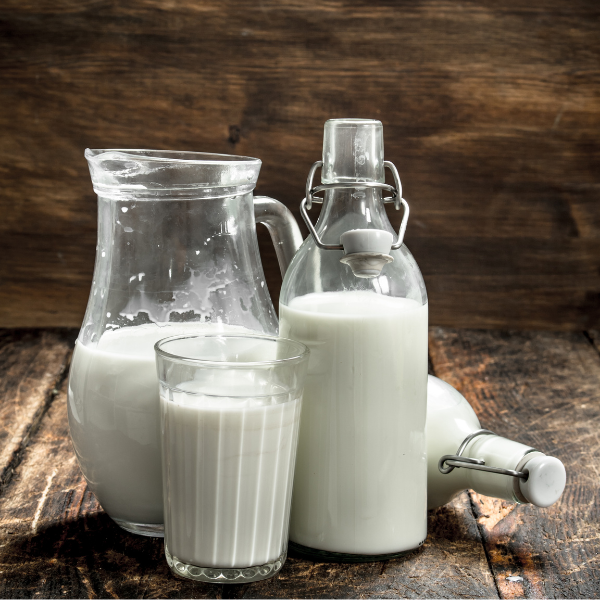
10. Fortified Plant-Based Milks (Soy, Oat, Almond)
What it is: Plant milks that have added calcium and vitamin D on the label.
Why it helps: Fortified choices can match some dairy calcium levels. They suit families preferring plant-based diets or toddlers with milk allergy.
How to serve: Choose unsweetened, fortified versions. Use in cereal, soups, or as a small drink.
Portion tips: Check the label for calcium per cup. Aim to combine fortified milk with other calcium foods to reach daily needs.
Safety notes: Not all plant milks are equal. Soy milk has more protein than almond or oat milk. Speak with your pediatrician to pick the right option for your child.
Recipe idea: Blend fortified soy milk with banana and a spoon of nut butter for a filling smoothie.
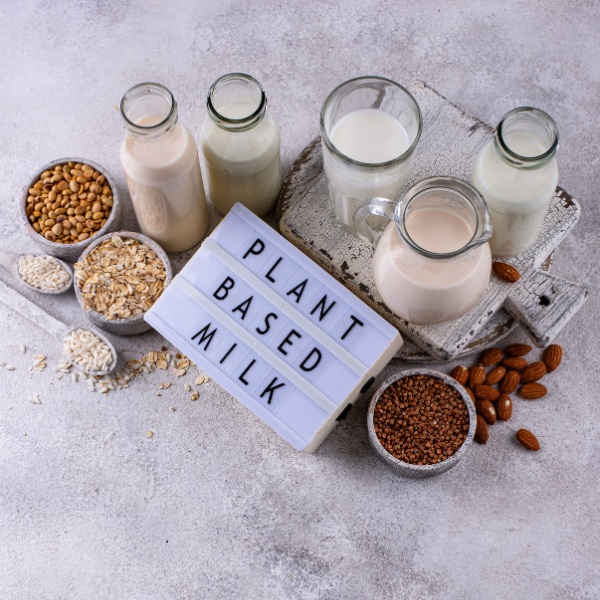
11. Fortified Cereals and Oats
What it is: Breakfast cereals or oats with added calcium and vitamins.
Why it helps: Fortified cereals give extra calcium in a child-friendly form.
How to serve: Serve with milk or yogurt. Add berries or mashed fruit for taste and fiber.
Portion tips: Read the package to see the calcium amount. Keep added sugar low. A small bowl with milk or yogurt makes a good breakfast.
Safety notes: Avoid high-sugar cereals. Choose whole-grain and low-salt options.
Recipe idea: Cook oats with milk, stir in mashed pear and a sprinkle of ground almonds.
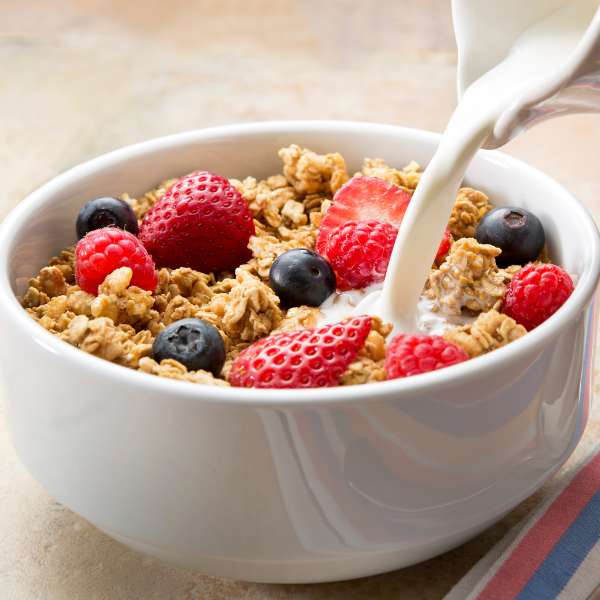
12. Salmon and Sardines (Soft, Flaked)
What it is: Small fishes rich in calcium and healthy fats. Sardines have soft edible bones that add calcium.
Why it helps: Sardines and canned salmon are good calcium sources, especially with bones. A 100 g portion of sardines can provide a large share of calcium.
How to serve: Flake cooked salmon into pasta, rice, or mashed potato. For sardines, pick boned canned versions and mash well. Mix with a little mayo or yogurt for spreads.
Portion tips: Start with 1–2 tablespoons of flaked fish. Increase by appetite.
Safety notes: Check for small bones and remove any you find. Watch for fish allergies. Limit high-mercury fish; sardines and canned salmon are low in mercury and safe for toddlers.
Recipe idea: Mash salmon with avocado and lemon. Serve on soft bread or toast squares.
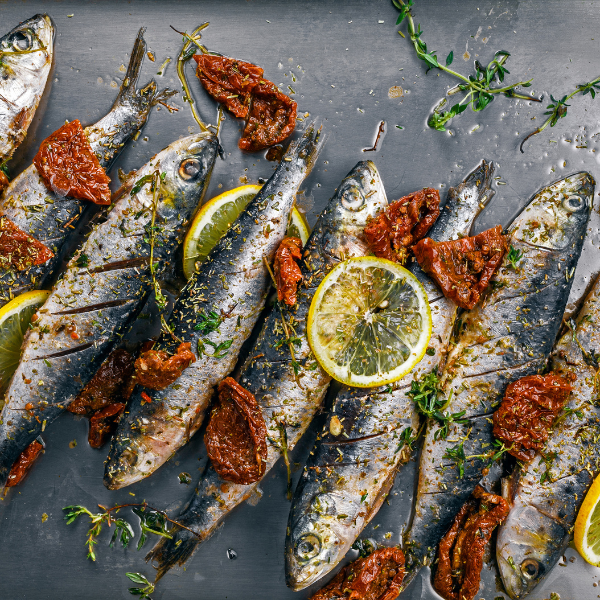
13. Eggs (With Yolk)
What it is: Whole eggs, especially the yolk.
Why it helps: Eggs give small amounts of calcium, plus vitamin D, which helps absorb calcium better.
How to serve: Scrambled, boiled, or in omelets with cheese and soft veg.
Portion tips: 1 egg is a good serving for toddlers. Pair with another calcium food like cheese.
Safety notes: If egg allergy runs in the family, introduce carefully and speak with your doctor if worried. Cook eggs fully to reduce salmonella risk.
Recipe idea: Make a mini omelet with cheese and diced soft spinach.
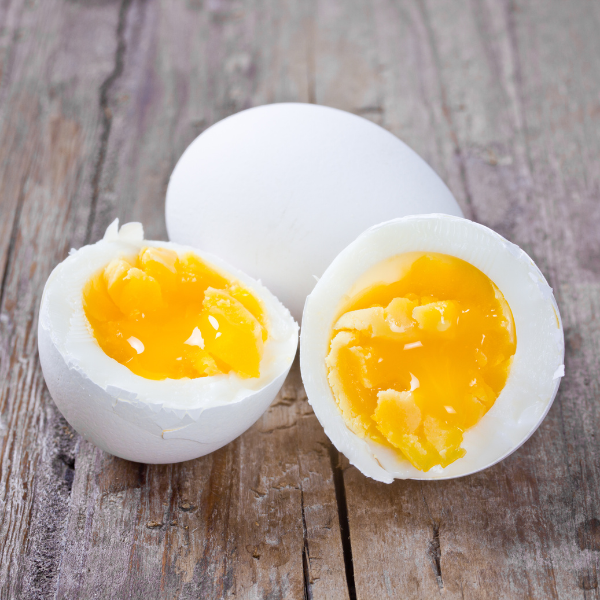
14. Almonds (Ground or Almond Butter)
What it is: Almonds have calcium. Whole nuts are a choking risk for young children. Use almond butter or finely ground almonds instead.
Why it helps: Almond butter offers calcium and healthy fats that are good for growth.
How to serve: Spread a thin layer on toast. Stir into porridge. Blend into smoothies.
Portion tips: Start with 1 teaspoon of almond butter and watch for any allergy signs. Increase slowly.
Safety notes: Never give whole nuts to toddlers under 4–5 years because of choking risk. Nut butters should be spread thin, not served as thick spoonfuls.
Recipe idea: Mix 1 tsp almond butter into 1/4 cup warm oats with mashed banana.
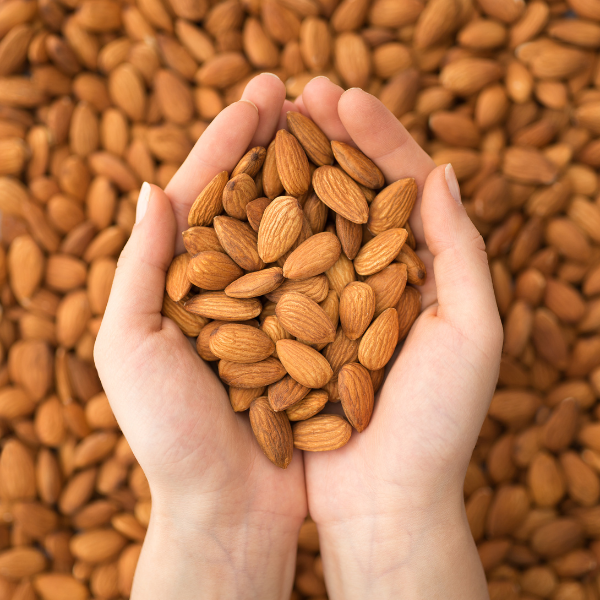
15. Oranges and Fortified Orange Juice
What it is: Fresh oranges or calcium-fortified orange juice.
Why it helps: Oranges contain some calcium and vitamin C. Fortified juices can add more calcium. Vitamin C helps the body use other nutrients.
How to serve: Offer orange slices as finger food. Give small amounts of diluted fortified juice (no more than 4–6 oz per day) if you use juice.
Portion tips: Whole fruit is best. If you use juice, dilute it and keep portions small.
Safety notes: Too much juice ups sugar intake and may harm teeth. Whole fruit gives fiber too.
Recipe idea: Mix small pieces of orange into yogurt or oatmeal.
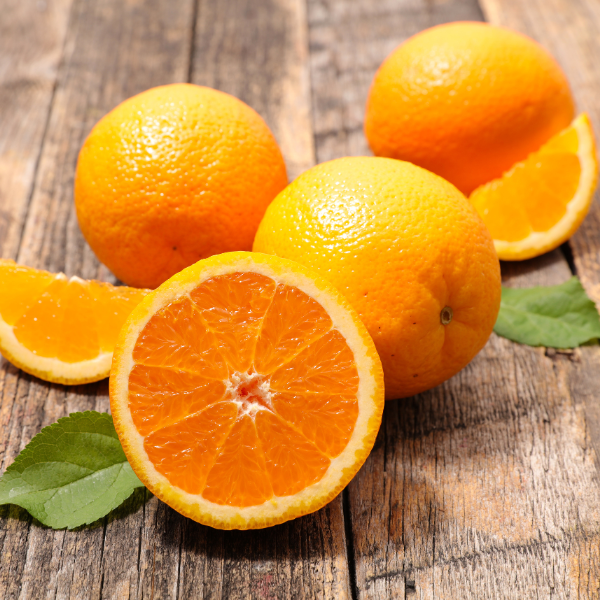
Helpful Tips for Parents (Simple and Practical)
1. Spread calcium across the day.
Small servings at each meal add up. A little yogurt, a bit of cooked veg, and some milk give steady calcium.
2. Watch milk amounts for toddlers.
Limit cow’s milk to about 2 cups (16 ounces) per day. Too much milk can lower iron intake. HealthyChildren.org
3. Add vitamin D foods and sunlight.
Vitamin D helps bones take in calcium. Foods like eggs, fatty fish, and fortified milk help. A few minutes of sun on arms and face (without sunscreen) can also help, but follow local health advice.
4. Mix dairy and non-dairy foods.
Combine yogurt with mashed beans or tofu with fruit. Variety helps reach needs without force-feeding.
5. Introduce allergens safely.
New allergy guidelines suggest early, age-appropriate introduction of peanut-containing foods for many babies to lower allergy risk. If your baby has severe eczema or a known allergy, talk with your doctor first.
6. Avoid choking risks.
Do not give whole nuts, large pieces of raw veggies, whole grapes, or hard candies to young children. Thin spreads and finely ground nuts are safer.
7. Read labels for “fortified.”
Plant milks and cereals vary. Look for calcium and vitamin D on the label. Serve fortified items with other healthy foods.
Sample Mini Meal Plan (1 day) – Toddlers (1–3 years)
Breakfast: Fortified oats cooked in milk + small banana slices.
Snack: Plain yogurt with mashed berries.
Lunch: Flaked salmon and mashed potato + soft steamed broccoli.
Snack: Thin almond butter on soft toast (tiny amount).
Dinner: Soft tofu stir with soft veg and a bit of rice.
Drink times: Small cups of milk across the day, not more than 2 cups total.
One-Week Meal Plan for Babies (6-12 Months)
At this age, breast milk or formula is still the main source of nutrition. Solids are just for practice and learning textures. Offer soft, mashed, or pureed foods. Always feed slowly and watch for allergies.
Day 1
- Breakfast: Mashed banana (rich in potassium and easy to digest).
- Lunch: Steamed and pureed sweet potato.
- Snack: A few spoonfuls of plain yogurt.
- Dinner: Rice cereal mixed with breast milk or formula.
Day 2
- Breakfast: Oatmeal puree with breast milk.
- Lunch: Mashed avocado with a drop of lemon.
- Snack: Soft pear puree.
- Dinner: Carrot puree with a little olive oil.
Day 3
- Breakfast: Apple puree.
- Lunch: Pureed pumpkin or butternut squash.
- Snack: A spoonful of mashed banana.
- Dinner: Rice porridge (soft and smooth).
Day 4
- Breakfast: Mashed pear with a little breast milk.
- Lunch: Lentil puree (rich in iron and protein).
- Snack: Small spoon of plain yogurt.
- Dinner: Steamed zucchini puree.
Day 5
- Breakfast: Mashed avocado.
- Lunch: Chicken puree mixed with rice.
- Snack: Apple or pear puree.
- Dinner: Mashed sweet potato.
Day 6
- Breakfast: Oatmeal puree.
- Lunch: Spinach and potato puree.
- Snack: Small spoonful of mashed banana.
- Dinner: Pumpkin puree.
Day 7
- Breakfast: Mashed banana with breast milk.
- Lunch: Lentil and rice puree (soft and smooth).
- Snack: Yogurt with fruit puree.
- Dinner: Carrot and sweet potato mash.
Baby Tips
- Always start with single foods to watch for allergies.
- Make textures smooth in the beginning, then slowly move to soft lumps.
- No salt, sugar, honey, or cow’s milk as a main drink before 1 year.
One-Week Meal Plan for Toddlers (1-3 Years)
At this stage, toddlers can eat more variety. They need 3 meals + 2 snacks daily. Food should be soft, cut into small pieces, and packed with nutrients.
Day 1
- Breakfast: Scrambled egg with toast fingers.
- Snack: Banana slices.
- Lunch: Rice with chicken and soft-cooked carrots.
- Snack: Yogurt with small fruit chunks.
- Dinner: Mashed potato with steamed broccoli.
Day 2
- Breakfast: Oatmeal with mashed apple.
- Snack: Handful of soft berries.
- Lunch: Lentil soup with bread.
- Snack: Cheese cubes.
- Dinner: Rice with fish (boneless, soft-cooked).
Day 3
- Breakfast: Whole wheat pancake with mashed banana.
- Snack: Soft pear slices.
- Lunch: Pasta with tomato sauce and ground chicken.
- Snack: Yogurt with oats.
- Dinner: Steamed potato, peas, and carrots mash.
Day 4
- Breakfast: Boiled egg with toast.
- Snack: Apple slices (steamed if too hard).
- Lunch: Vegetable khichdi (rice + lentils + vegetables).
- Snack: Banana smoothie (milk + banana).
- Dinner: Soft chapati with vegetable curry.
Day 5
- Breakfast: Oat porridge with dates paste.
- Snack: Cheese sticks.
- Lunch: Rice with minced chicken and peas.
- Snack: Yogurt with mashed mango.
- Dinner: Mashed sweet potato with steamed spinach.
Day 6
- Breakfast: Soft idli (rice cake) with yogurt.
- Snack: Watermelon cubes (seedless).
- Lunch: Macaroni with cheese and vegetables.
- Snack: Handful of boiled corn.
- Dinner: Rice with lentils and ghee.
Day 7
- Breakfast: Banana pancake (egg + banana).
- Snack: Grapes cut into quarters.
- Lunch: Chicken soup with bread.
- Snack: Yogurt with strawberries.
- Dinner: Vegetable pulao (rice with vegetables).
Toddler Tips
- Offer family foods but cut into small pieces.
- Encourage self-feeding with finger foods.
- Avoid nuts, popcorn, or hard candy (choking hazard).
- Keep mealtimes calm and happy.
Frequently Asked Questions (FAQs)
Q: When can my baby start yogurt or cheese?
A: Many babies accept yogurt and soft cheese after 6 months. Start with 1–2 teaspoons and watch for any reaction.
Q: Is almond butter safe?
A: Yes in thin spreads. Avoid thick spoonfuls. Do not give whole almonds to young children. CDC
Q: Should I give calcium supplements?
A: Most children get enough from food and milk. Only use supplements on a doctor’s advice.
Q: Can plant milks replace cow’s milk?
A: Fortified soy or oat milk can work, but check calcium and vitamin D on labels. Talk to your pediatrician when switching.
Q: How do I know if my child gets enough calcium?
A: Watch growth patterns and follow routine well-baby checks. Your pediatrician can test if needed.
Calcium builds the base for strong bones and teeth. Babies and toddlers need steady small amounts. You do not need one single “superfood.” Use many foods. Mix dairy and non-dairy items. Try yogurt, tofu, beans, fish, seeds, and small portions of milk. Keep textures safe. Introduce new foods slowly. Watch for allergies and choking risks.
Sources: cdc.gov, ods.od.nih.gov, healthline.com, urmc.rochester.edu
POV: Every child is different, so it’s always best to check with your pediatrician before adding new foods to your baby or toddler’s diet.

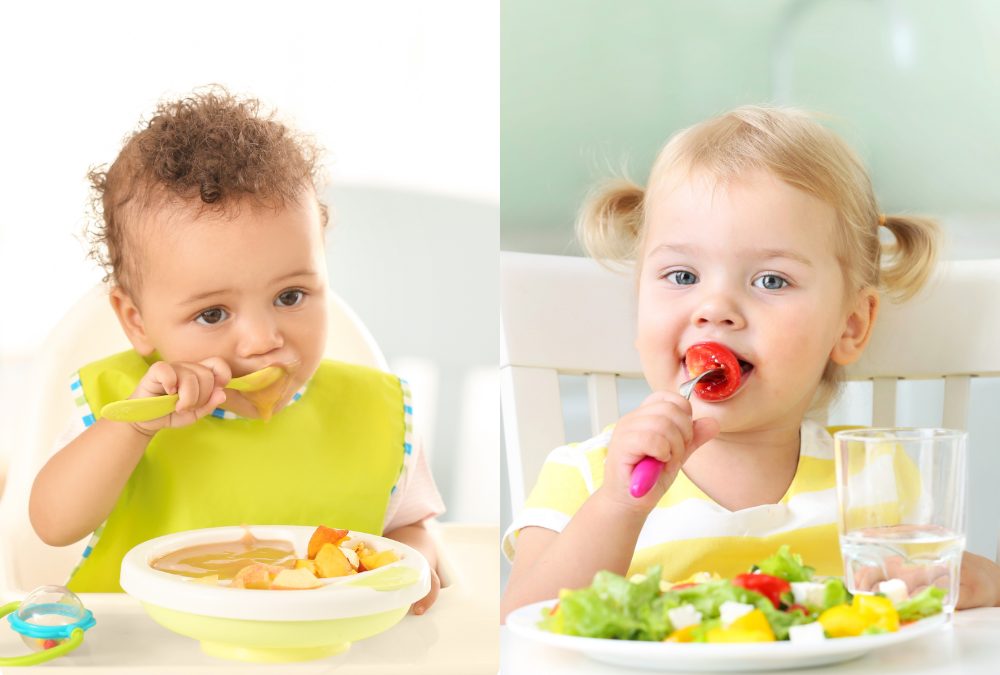



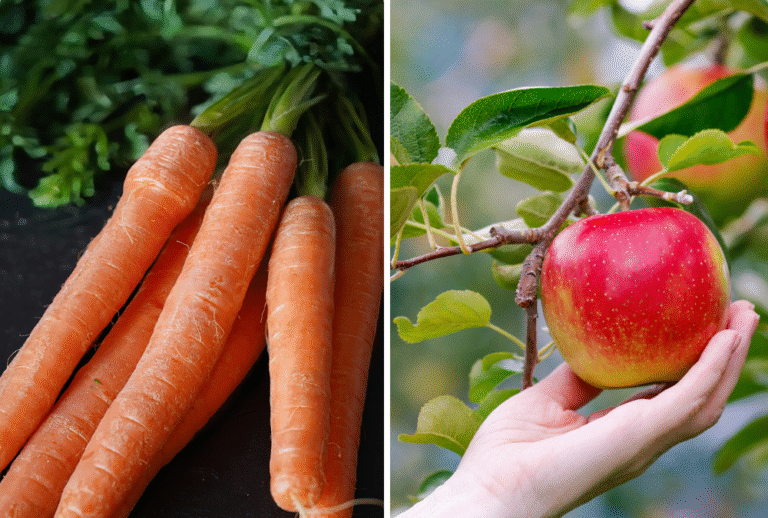



One Comment